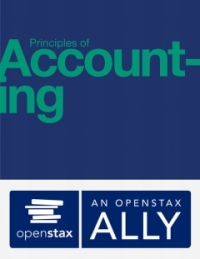





Hamilton Bracelet Company (HBC) is a family-owned business which opened in 2014. The company manufactures bracelets that are sold to customers and to specialized jewelry stores. HBC's production and sales are seasonal, with higher demand for its bracelets towards the end of the year. HBC recently hired a new controller, Gabrielle Simon. Simon's first task is to analyze HBC's inventory costing system. All the company's bracelets require the same quality direct materials and skilled direct labor. Direct labor is not a major component of manufacturing costs; therefore, direct materials and direct labor costs are combined into a single Prime Costs account. The company has always used an actual costing system. Therefore, the actual costs incurred in each accounting period (quarter) are being assigned to that quarter's production. Simon will begin her analysis by reviewing last year's (2019) income statement based on actual costing which was prepared by the former controller. Based on HBC's accounting records for 2019, Table 1 shows actual fixed and variable operating costs, actual fixed and variable overhead costs, average sales price per unit, and unit sales. (Every quarter the number of units produced equaled the number of units sold.) Table 1 $150 Actual selling price per bracelet Variable costs per bracelet Prime costs Selling and administrative costs Fixed selling and administrative costs Unit sales (annual) $80 $10 $80,000 for the year ($20,000/quarter) 41,000 Actual overhead costs per quarter 1st Quarter 2nd Quarter Variable $22,000 $52,000 overhead Fixed $100,000 $100,000 overhead 3rd Quarter $250,000 4th Quarter $526,000 Year $850,000 $100,000 $100,000 $400,000 Sales and Production by Quarter (units) 1st Quarter 2nd Quarter 1,000 2,500 Year 3rd Quarter 12,500 4th Quarter 25,000 41,000 Overall, HBC's management is satisfied with the results for the year as a whole, but is very concerned with the losses reported in the first two quarters. Management is considering not operating in these two quarters, hoping this will improve the profits for the entire year. That is, they anticipate eliminating operations in the first two quarters will increase operating income. Simon wonders if a different analysis using normal costing would be more meaningful and helpful for management to consider. Simon determines that machine hours is the most appropriate cost driver for the company. Based on HBC's accounting records for 2019, Table 2 shows budgeted production and sales, budgeted annual overhead costs, and actual cost-driver information. Table 2 40,000 units (80,000 machine hours) Budgeted production and sales Budgeted annual overhead costs Variable Fixed $800,000 $400,000 Actual cost-driver usage 1st Quarter 3rd Quarter 4th Quarter 2nd Quarter 5,200 hours Year 84,000 hours 1,900 hours Machine hours 24,900 hours 52,000 hours Management is very interested in what Simon will come up with and in learning more about the comparison of actual costing and normal costing. Respond to the below requirements. The group response should be typed, with 12-point Times New Roman font and 1 margins, single-spaced. The response should be a Microsoft Word document (not a PDF file) and should be written in a clear and concise manner. You are not required to use any outside resources to complete the case study (i.e., course material should be sufficient). Separate your responses by using the requirement numbers as subheadings (e.g., Requirement 1, Requirement 2, etc...) and include required attachments as noted. Requirements: 1. Prepare the 2019 income statement in good form-quarterly and annual (format provided in Appendix A) based on actual costing that would have been prepared by the former controller. Include this as Attachment 1. Discuss the losses in the first two quarters and how your results reflect seasonality, referencing the attachment as appropriate. 2. Calculate the predetermine overhead ratesseparately for variable overhead and fixed overheadto be used with normal costing and the amount of overhead that will be applied each quarter. Include calculations as Attachment 2. Discuss the benefits of applying overhead using a predetermined overhead rate rather than using actual overhead. Reference the attachment as appropriate. 3. Prepare the 2019 income statement in good form-quarterly and annual (format provided in Appendix B) based on normal costing that would have been prepared by the former controller. Include this as Attachment 3. Discuss why the results differ from those using actual costing, referencing attachments as appropriate. 4. What are the overhead variances for variable overhead and fixed overhead at the end of the year (i.e., accumulated across all four quarters but you only need to show the variances calculated at year-end)? Include the calculations as Attachment 4. Provide the journal entry (in the main body of your report), referencing the attachment. Assume the variance is immaterial. 5. Discuss which costing methodactual or normalyour group would recommend Hamilton Bracelet Company use and justify (explain) your recommendation, including whether your group supports management's plan to eliminate operations in the first two quarters. Reference attachments and/or prior discussion as appropriate. Appendix A Hamilton Bracelet Company Income Statement For the Year Ended December 31, 2019 1st Quarter 2nd Quarter 3rd Quarter 4th Quarter Year Sales Cost of goods sold: Prime costs Variable overhead Fixed overhead Total cost of goods sold Gross profit Operating expenses: Variable selling and administrative Fixed selling and administrative Total operating expenses Operating income Appendix B Hamilton Bracelet Company Income Statement For the Year Ended December 31, 2019 14 Quarter 2nd Quarter 3rd Quarter 4th Quarter Year Sales Cost of goods sold: Prime costs Variable overhead Fixed overhead Total cost of goods sold Gross profit Operating expenses: Variable selling and administrative Fixed selling and administrative Total operating expenses Operating income Adjustment for under (over) applied overhead 2 Variable overhead Fixed overhead Adjusted operating income












